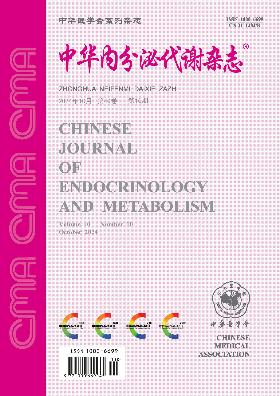New insights into the growing diabetes epidemic in China: middle-aged obesity-related insulin resistance becomes the major threat
Q4 Medicine
引用次数: 0
Abstract
Delineation of the relationship between insulin resistance, β cell dysfunction, and obesity is crucial for the prevention and effective management of diabetes. Previous studies have indicated that, compared with type 2 diabetes in Caucasian, type 2 diabetes in East Asians is characterized primarily by β cell dysfunction rather than insulin resistance. This pathophysiological characterization of diabetes in East Asians is mainly derived from Japanese and Asian-American populations, whereas data from mainland China are scarce. Over the past four decades, China has witnessed a substantial rise in obesity, in parallel with the transitions from principally active lifestyles and calorie-restricted diets to sedentary life styles and energy-dense, western diets. Obesity is an insulin resistance state and the major factor driving the worldwide epidemic of diabetes. It is unknown whether, and if so how, obesity affects the two primary mechanisms, insulin resistance and β cell dysfunction, responsible for the development of diabetes in the Chinese population. Recently, the Lancet Diabetes & Endocrinology published an original research paper from the China Cardiometabolic Disease and Cancer Cohort Study (4C). From a public health perspective, the results of this study reinforce the urgency of tackling obesity as a major preventive strategy for the epidemic of type 2 diabetes in China. Key words: Diabetes mellitus; Insulin resistance; βcell dysfunction; Obesity; China中国日益严重的糖尿病流行的新见解:中年肥胖相关的胰岛素抵抗成为主要威胁
阐明胰岛素抵抗、β细胞功能障碍和肥胖之间的关系对于预防和有效管理糖尿病至关重要。先前的研究表明,与高加索人的2型糖尿病相比,东亚人的2号糖尿病主要以β细胞功能障碍而非胰岛素抵抗为特征。东亚糖尿病的病理生理特征主要来自日本和亚裔美国人,而来自中国大陆的数据很少。在过去的四十年里,中国的肥胖率大幅上升,同时也从主要的积极生活方式和热量限制饮食转变为久坐不动的生活方式和高能量的西方饮食。肥胖是一种胰岛素抵抗状态,也是全球糖尿病流行的主要因素。目前尚不清楚肥胖是否以及如何影响胰岛素抵抗和β细胞功能障碍这两种主要机制,这两种机制是导致中国人群糖尿病发展的原因。最近,《柳叶刀糖尿病与内分泌学》发表了一篇来自中国心脏代谢疾病与癌症队列研究(4C)的原创研究论文。从公共卫生的角度来看,这项研究的结果强化了将肥胖作为中国2型糖尿病流行的主要预防策略的紧迫性。关键词:糖尿病;胰岛素抵抗;β细胞功能障碍;肥胖;中国
本文章由计算机程序翻译,如有差异,请以英文原文为准。
求助全文
约1分钟内获得全文
求助全文
来源期刊

中华内分泌代谢杂志
Medicine-Endocrinology, Diabetes and Metabolism
CiteScore
0.60
自引率
0.00%
发文量
7243
期刊介绍:
The Chinese Journal of Endocrinology and Metabolism was founded in July 1985. It is a senior academic journal in the field of endocrinology and metabolism sponsored by the Chinese Medical Association. The journal aims to be the "Chinese broadcaster of new knowledge on endocrinology and metabolism worldwide". It reports leading scientific research results and clinical diagnosis and treatment experience in endocrinology and metabolism and related fields, as well as basic theoretical research that has a guiding role in endocrinology and metabolism clinics and is closely integrated with clinics. The journal is a core journal of Chinese science and technology (a statistical source journal of Chinese science and technology papers), and is included in Chinese and foreign statistical source journal databases such as the Chinese Science and Technology Papers and Citation Database, Chemical Abstracts, and Scopus.
 求助内容:
求助内容: 应助结果提醒方式:
应助结果提醒方式:


